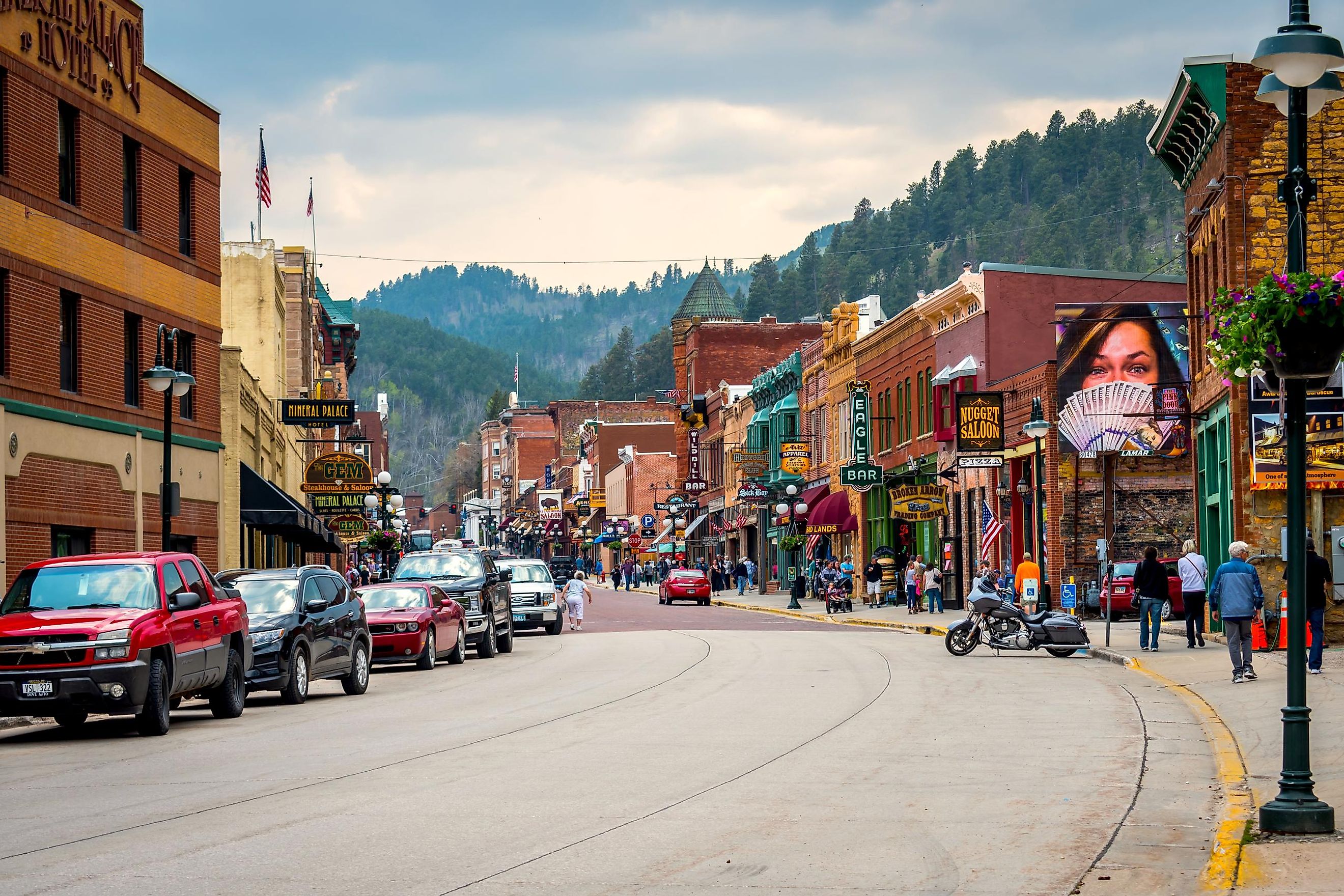
7 Most Underrated Towns In South Dakota To Take A Trip To
The very name of South Dakota evokes a part of the western history of the United States. The state today has evolved from a Wild-West brand of lawlessness and boom-and-bust cycles to become one of the country's best and most beautiful destinations. Yet the state sometimes goes underrated. These small towns, with their eclectic blend of Western heritage, natural spaces, and continuing cultural traditions, show how much the state has to offer. South Dakota's small towns may just be the right places to better understand the state as a whole.
Spearfish
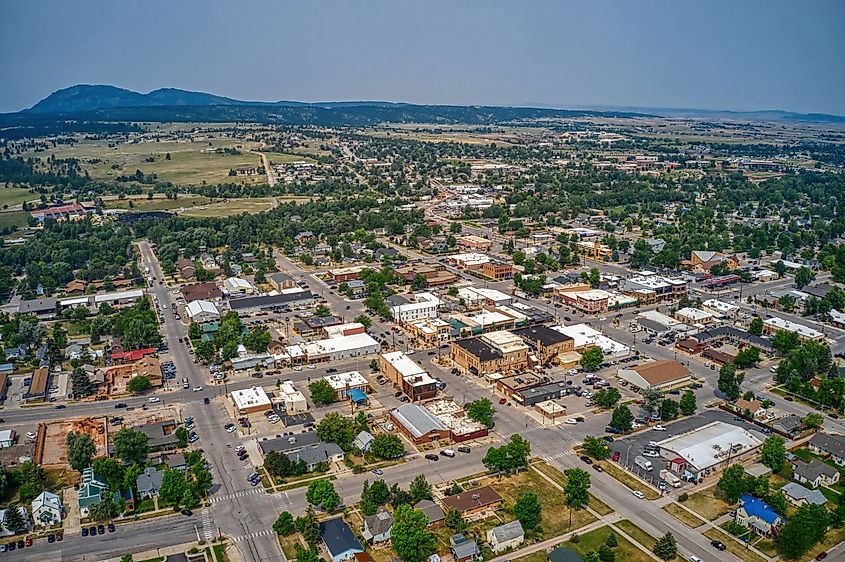
Spearfish, population 12,900, sits in the Black Hills region of South Dakota, a land celebrated for its beauty and dramatic history. Founded in 1876, Spearfish, in the southwestern part of the state and not far from Wyoming, boasts historic buildings including the Matthews Opera House, which today hosts a busy program of live performances and events. The downtown also offers restaurants with standard American fare, Mexican cuisine, and a raft of local bars.
Fans of the Old West will head to the High Plains Western Heritage Center, where exhibits pay tribute to the area's ranching and pioneer heritage. Nature enthusiasts will no doubt want to see Spearfish Canyon, which offers hiking trails, waterfalls, and scenic views — an ideal experience of the area's natural sights.
Mitchell
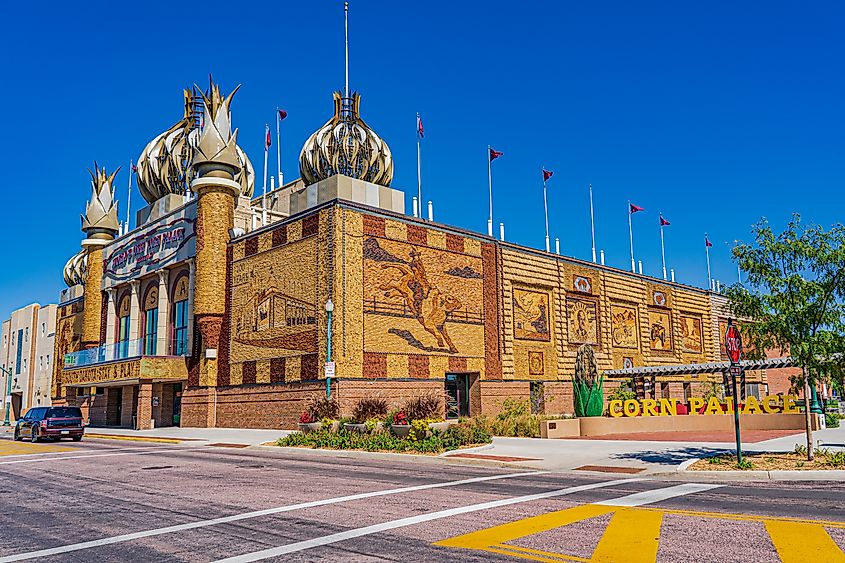
Did someone say "Corn Palace"? Mitchell, with 15,700 residents, lies in the James River Valley in the state's southeast. Incorporated in 1883, the town hosts two places of higher education: Dakota Wesleyan University and Mitchell Technical Institute. These give the town a young spirit and a constant population of students. The town's Corn Palace, also referred to as The World's Only Corn Palace, was first built in 1892 and celebrates the region's agriculture. It presents the visitor with murals painted with various colors of dried grains and corn. The unique building's exterior symbolizes natural grains, making it a landmark that local and out-of-state tourists drive long distances to see and photograph. The site serves as a convention center and facility for various public events and hosts the Corn Palace Festival every summer.
When the Corn Palace proves too corny, head to the Dakota Discovery Museum, which honors the history of the prairie and its peoples. The exhibit spans the years 1600 through 1939, the end of the Great Depression and the verge of World War II. The Mitchell Prehistoric Indian Village, set on the southern bank of Lake Mitchell, deepens a visitor's contact with local history amid a bucolic natural setting.
Pierre
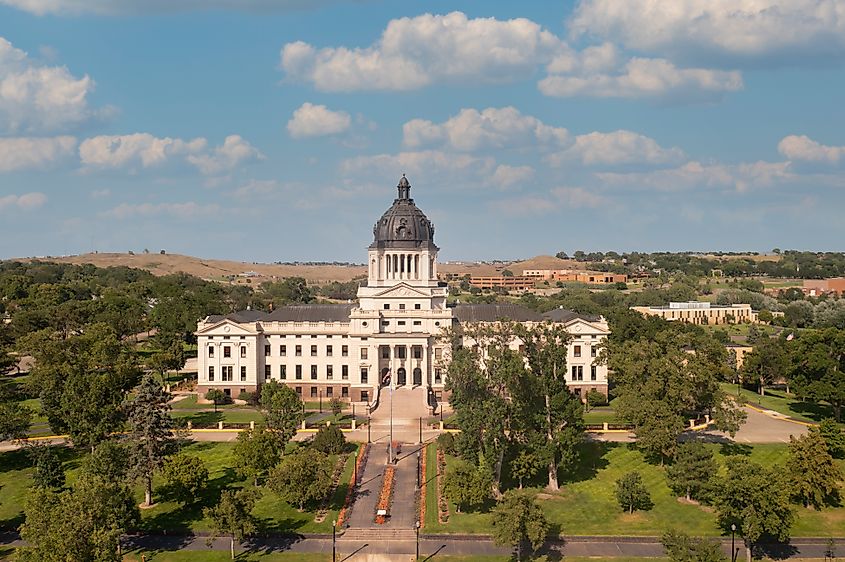
The state capital, Pierre, has 14,000 inhabitants, the nation's second smallest (after Montpelier, Vermont, with about 8,000). Sited on the east bank of the Missouri River, the central town, founded in 1880, is a popular destination for outdoor enthusiasts of all kinds. Lake Oahe, one of the world's largest man-made lakes, also offers great recreational opportunities to the residents of Pierre and is popular among fishermen. For travelers with children, the Lewis and Clark Family Center, located on Farm Island south of downtown, offers immersive lessons in local and US history. Interesting fact: Pierre is the only US state capital not served by either an interstate highway or an expressway.
Deadwood
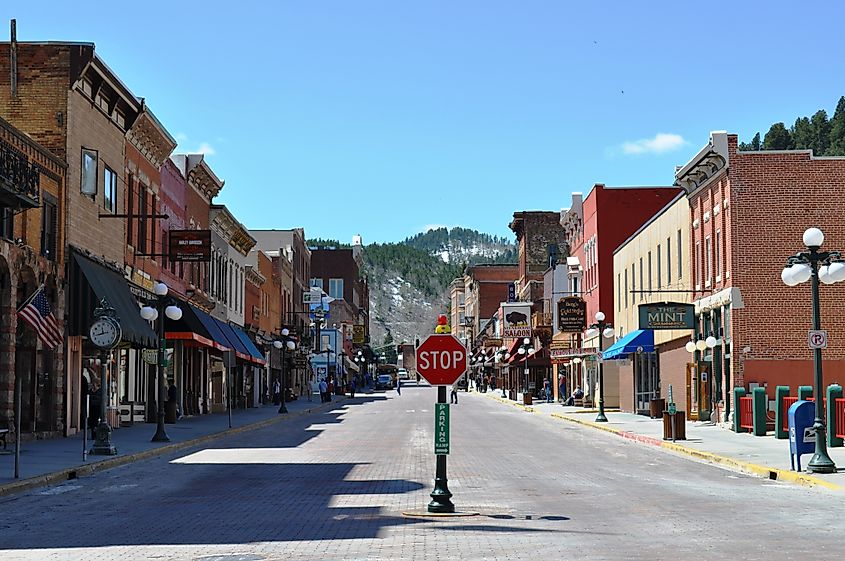
Deadwood, population 1,200, gave its name to the popular, western-themed American television show of recent years. The town today, which lies southeast of Spearfish, upholds that Western tradition and is known as a popular destination for fans of the Old West. Founded in 1876, the place was synonymous with the Black Hills Gold Rush of the same period. The town's early lawlessness eventually gave way to more order, and today, Deadwood's streets host historic buildings, casinos, saloons, and souvenir shops that recall bygone days. Visitors should seek out the Adams Museum, with its artifacts and exhibits on Deadwood's dramatic history. Calamity Jane, a Western legend, lies buried in nearby Mount Moriah Cemetery, which likewise hosts the remains of Wild Bill Hickok. For some very western scenery, the Black Hills National Forest — with canyons, gulches, grasslands, and lakes — lies just south of town.
Vermillion
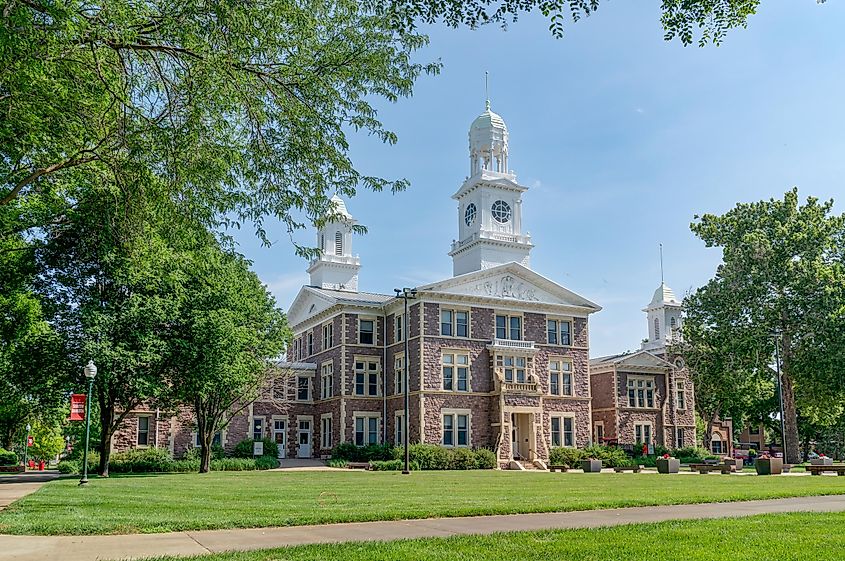
Vermillion, with 11,900 souls, lies in the far southeast corner of the state. Founded in 1859 along the banks of the Missouri River, across from neighboring Nebraska, the town — its name a synonym for the color red — takes its meaning from a translation of the Lakota term for 'red stream.' The town boasts a rich cultural history, as embodied by the downtown National Music Museum, which since 1973 has operated on the campus of the University of South Dakota. The Aalfs Auditorium, a performing arts center, sits next door. Art lovers will further enjoy the town's five public murals. For nature and outdoors enthusiasts, Vermillion offers nine parks in and around town, which allow for diverse pastimes, from baseball and walking to cycling and golf.
Sturgis
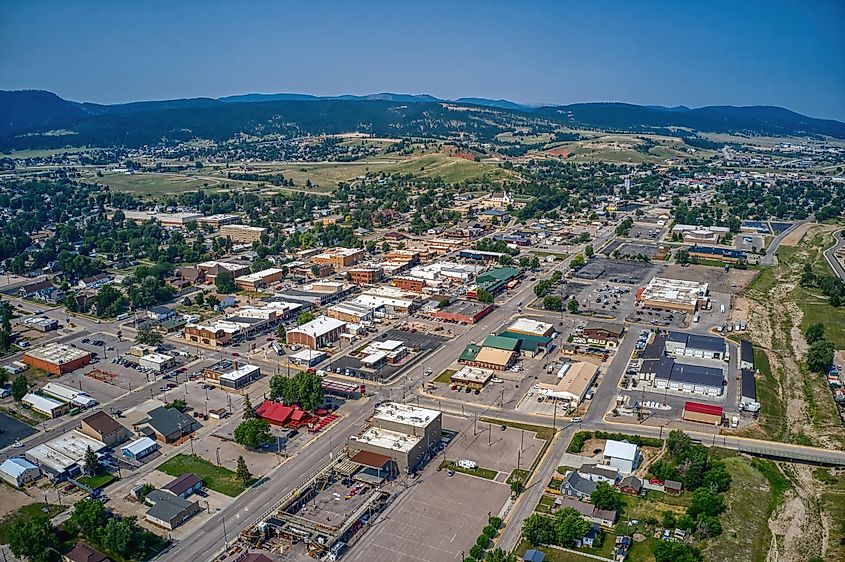
Founded in 1878, Sturgis, like Deadwood, owes its existence to the Black Hills Gold Rush, which attracted settlers, speculators, pioneers, and prospectors seeking their fortunes. Sturgis today, with 7,200 residents, is famous for the Sturgis Motorcycle Rally, an annual celebration of bikes, and the open American road, since it began in 1938. Bikers and their fans — past festivals have drawn 700,000 attendees — descend on Sturgis each August.
For some wide-open spaces, Sturgis is also a gateway to the stunning Black Hills region, offering outdoor adventures amid some of the best landscapes of the United States. An hour's drive south is Mount Rushmore National Memorial, where the faces of four of the country's most influential presidents stand etched forever in the face of a cliff. Other park options include Badlands National Park and the Fort Meade Recreation Area Park.
Aberdeen
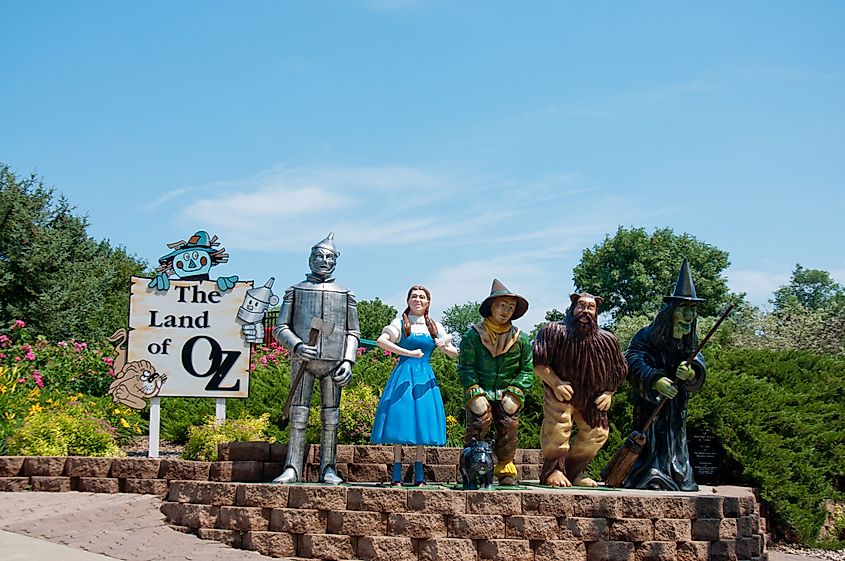
Aberdeen, population 28,200, balances a mid-sized town's amenities with a small-town pace of life. Found in the state's northeast, the town, first incorporated in 1882, is home to Northern State University, making it one of South Dakota's college towns, alongside Mitchell. Culture abounds in Aberdeen through its drama and film traditions, too: the Aberdeen Community Theatre has operated since 1979, while the South Dakota Film Festival, held each autumn, convenes in Aberdeen since 2007 and has drawn movie-star attendees like Kevin Costner. For nature enthusiasts, the town's popular green spaces include the Richmond Lake Recreation Area as well as Kuhnert Arboretum, where Aberdeen's schoolchildren often go to learn about local plant and animal species.
The Soul Of South Dakota Lives In Its Underrated Small Towns
South Dakota's small towns make up what may just be the best the state can offer a visitor from away. Spearfish and Deadwood typify the dramatic beauty and history of the Black Hills region. Pierre and Sturgis show a side of the state's natural, and bikable, attractions. Mitchell and other towns celebrate South Dakota's major forms of agriculture, and not only corn. The state's university towns, from Vermillion to Aberdeen, add a spirit of culture and intellectual life to what was once a typical pioneer region. With so much to see, South Dakota's smaller towns may not be underrated much longer.







